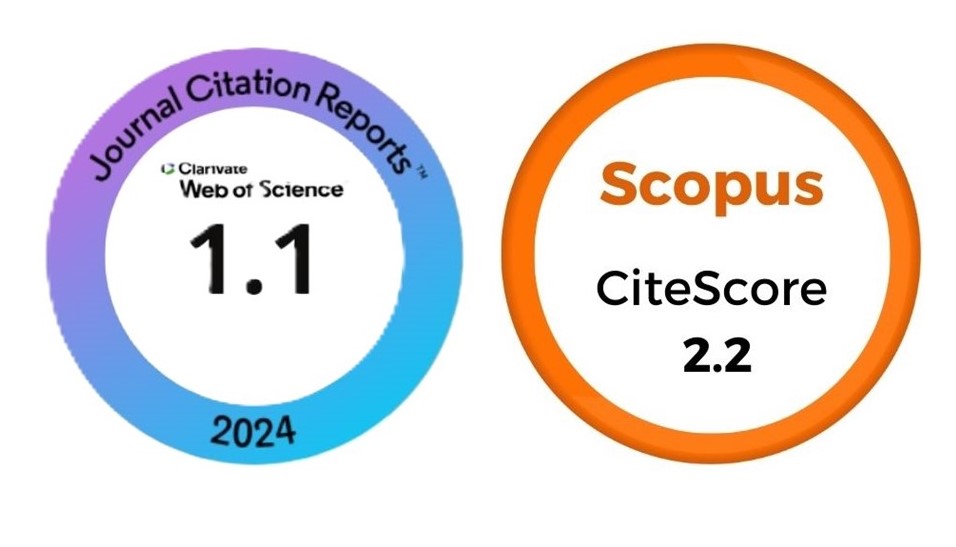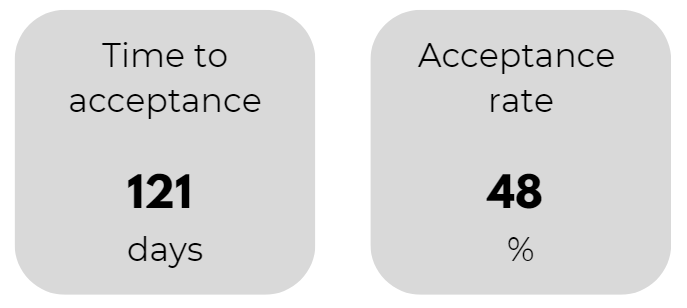Análise de viabilidade de sistema flutuante de floricultura para uso estético e econômico de áreas úmidas poluídas em áreas urbanas de Bangladesh
DOI:
https://doi.org/10.1590/2447-536X.v31.e312824Palavras-chave:
adaptação climática, agricultura flutuante, submersão, tagetes, urbanizaçãoResumo
A rápida urbanização gera impactos prejudiciais ao meio ambiente, especialmente nos corpos d’água. A água poluída de fontes industriais e residenciais acaba em corpos d’água e os torna inacessíveis e desagradáveis. Uma prática de cultivo indígena, a agricultura flutuante permite o uso das zonas húmidas em pousio para a produção agrícola. O cultivo de flores economicamente importantes como o tagetes (Tagetes erecta L.) em áreas úmidas por meio da técnica de agricultura flutuante torna os corpos d’água produtivos e esteticamente valiosos. Considerando isso, foi realizado um experimento para avaliar o desempenho do tagetes em leito flutuante. Para realizar o experimento, duas amostras diferentes (com base na cor da flor) de mudas de tagetes foram cultivadas em leito flutuante e em solo seguindo um desenho experimental de parcelas subdivididas. Dados sobre diferentes parâmetros morfológicos, fisiológicos e relacionados ao rendimento foram coletados e submetidos à análise estatística. Os resultados do estudo revelaram que, com outros parâmetros de crescimento favoráveis, o número de flores foi maior na condição flutuante. Estas respostas significativas de crescimento sugerem a boa adaptação do tagetes na técnica de agricultura flutuante.
Downloads
Referências
AL-IMRAN, M.; KARMAKER, D.; MITRA, S.; HAIDER, I.; RAHMAN, M.A.; DAS, S.K. Assessment of physiological and biochemical responses of chilli (Capsicum annuum) varieties in floating bed cultivation for adaptation to waterlogged areas of Bangladesh. Functional Plant Biology, v.51, n.9, 2024. https://doi.org/10.1071/FP24084
AL-MARUF, A. Floating gardening in coastal Bangladesh: Evidence of sustainable farming for food security under climate change. Journal of Agriculture, Food and Environment (JAFE), v.1, n.4, p.161-168, 2020. https://doi.org/10.47440/JAFE.2020.1424
BBS. Yearbook of Agricultural Statistics-2022. 34th Series Bangladesh Bureau of Statistics (BBS). Statistics and Informatics Division (SID). Bangladesh: Ministry of Planning Government of the People’s Republic of Bangladesh, 2023.
BEGUM, F. Ionic relation under salinity in Triticum aestivum L. Dhaka: Dhaka University, 1993.
BEGUM, S.L.; HIMAYA, S.M.M.S.; AFREEN, S.M.M.S. Potential of water hyacinth (Eichhornia crassipes) as compost and its effect on soil and plant properties: A review. Agricultural Reviews, v.43, n.1, p.20-28, 2022.
BUTHE, M.; SARKAR, I.; BELLAPAKONDA, G.; MAITRA, S.; KHAN, A.; CHATTERJEE, R.; ROY, A. Effect of organic nutrients on growth and flowering attributes of african marigold (Tagetes erecta L.) under Terai Region of West Bengal. International Journal of Environment and Climate Change, v.12, p.1473–1483, 2022. https://doi.org/10.9734/IJECC/2022/v12i1131128
GOMEZ, K.A.; GOMEZ, A.A. Statistical procedures for agricultural research. New Jersey: John Wiley & sons, 1984.
HALDER, R.K.; DASH GUPTO, S.; ANTU, A.; FARIHA, M.; DEB, J.; RAHMAN, M.K. Influence of different organic manures on the growth and yield of marigold (Tagetes erecta L.) plants. Journal of Biodiversity Conservation and Bioresource Management, v.9, p.39-48, 2023. https://doi.org/10.3329/jbcbm.v9i2.70055
HIRA, B. Scope and speciality of floating agriculture in Bangladesh | The Asian Age Online, Bangladesh. 2019. Available at: https://dailyasianage.com/news/195656/scope-and-speciality-of-floating-agriculture-in-bangladesh. Acessed on: 18 oct. 2023.
HUANG, X.; GAO, W.; YUN, X.; QING, Z.; ZENG, J. Effect of natural antioxidants from marigolds (Tagetes erecta L.) on the oxidative stability of soybean oil. Molecules, v.27, n.9, p.2865, 2022. https://doi.org/10.3390%2Fmolecules27092865
HUQAIL, A.A.A.; KUMAR, P.; FAYSSAL, S.A.; ADELODUN, B.; SIRIC, I.; GOALA, M.; CHOI, K.S.; TAHER, M.A.; KHOLY, A.S.E.; EID, E.M. Sustainable use of sewage sludge for marigold (Tagetes erecta L.) cultivation: experimental and predictive modeling studies on heavy metal accumulation. Horticulturae v.9, n.447 p.1-14, 2023. https://doi.org/10.3390/horticulturae9040447
HUTTON, C.W.; HILL, C.T.; CLARK, M.J. Modified Sustainable Livelihoods Framework (MSLF): A tool for monitoring and assessing GIAHS sites. Southampton, University of Southampton, 2015.
IRFANULLAH, H.M. Floating gardening in Bangladesh: Already affected by climate variability. Biodiversity conservation and response to climate variability at community level. IUCN (lnternational Union for Conservation of Nature), United Nations Environment Programme (UNEP), United Nations University (UNU), 2009.
IRFANULLAH, H.M.; AZAD, M.A.K.; KAMRUZZAMAN, M.; WAHED, M.A. Floating gardening in Bangladesh: a means to rebuild lives after devastating flood. India: NISCAIR-CSIR, 2011.
ISLAM, M.D.; RAHMATULLAH, S.M.; AHMED, M.; SATTER, A.; SARKER, B.; HOSSAIN, A.; MOJUMDER, S. Aquatic weeds diversity of Bangladesh Agricultural University Campus, Mymensingh, Bangladesh. Asian-Australasian Journal of Bioscience and Biotechnology, v.2, n.2, p.181–192, 2017. https://doi.org/10.3329/aajbb.v2i2.64384
ISLAM, T.; ATKINS, P. Indigenous floating cultivation: A sustainable agricultural practice in the wetlands of Bangladesh. Development in Practice, v.17, n.1, p.130-136, 2007. https://doi.org/10.1080/09614520601092733
JAHAN, N.; KHANAM, D. Floating vegetable cultivation: A sustainable livelihood strategy for flood prone areas of Bangladesh. Global Journal of Human-Social Science: C Sociology & Culture, v.20, n.9, p.17-22, 2020.
KADER, M.A.; SINGHA, A.; BEGUM, M.A.; JEWEL, A.; KHAN, F.H.; KHAN, N.I. Mulching as water-saving technique in dryland agriculture. Bulletin of the National Research Centre, v.43, n.1, p.1–6, 2019. https://doi.org/10.1186/s42269-019-0186-7
KALENGO, L.; GE, H.; LIU, N.; WANG, Z. The efficiency of aquatic macrophytes on the nitrogen and phosphorous uptake from pond effluents in different seasons. Journal of Ecological Engineering, v.22, n.8, 2021. https://doi.org/10.12911/22998993/140308
KARMAKER, D.; AL-IMRAN, M.; MITRA, S.; RAHMAN, M.A.; KUMAR DAS, S. Effect of different macrophytes on crop cultivation under floating agriculture system for climate change adaptation in Bangladesh. Aquatic Botany, v.189, n.103699, 2023. https://doi.org/10.1016/j.aquabot.2023.103699
KHILJI, S.A.; WASEEM, M.; TARIQ, S.; JABEEN, S.; JAMAL, A.; ALOMRANI, S.O.; JAVED, T.; RIAZ, A. Microbe assisted phytoremediation of heavy metal contaminated soil by using African Marigold (Tagetes erecta L.). Plant Stress, v.11, n.100369, 2024. https://doi.org/10.1016/j.stress.2024.100369
LUBEMBE, S. Water Hyacinth, an Invasive Species in Africa: A Literature Review. East African Journal of Environment and Natural Resources, v.6, 2023. https://doi.org/10.37284/eajenr.6.1.1293
MADIKIZELA, L.M. Removal of organic pollutants in water using water hyacinth (Eichhornia crassipes). Journal of environmental management, v.295, p.113153, 2021.
MEHMOOD, M.; RAHIM, G.; WAHID, A. Comparative study of Marigold (Tagetes erecta) varieties for growth habit and flowering quality in lahore conditions. Journal of Ornamental Plants, v.10, n.4, p.247– 252, 2020.
PRIYADARSHINI, A.; PALAI, S.K.; NATH, M.R. Effect of source of nitrogen on growth and yield of African marigold (Tagetes erecta L.). The Pharma Innovation Journal, v.7, n.7, p.917–921, 2018.
RAHMAN, A. Floating vegetable bed cultivation. Climate of Coastal Cooperation, p. 179–180, 2011.
SIKARWAR, P.S.; VIKRAM, B.; SENGUPTA, J. Effect of different mulches on vegetative growth, quality and flower yield of African marigold (Tagetes erecta L.) cv. Pusa Narangi Gainda. The Pharma Innovation Journal, v.10, n.2, p.279-281, 2021.
SULTANA, N.; MITRA, S.; DAS, S. K. Assessment of suitable growth condition of Salvinia spp. For sustainability of floating agriculture to mitigate climate challenges on crop cultivation. Journal of Science and Technology, v.5, p.53-62, 2023. https://doi.org/10.3329/jscitr.v5i1.74006
UPADHYA, A.K.; SINGH, R.; SINGH, P.K.R.; SENGAR, R.K.; KUMAR, M.; SINGH, N.V. Effect of integrated nutrient management on plant growth, flower yield of African marigold (Tagetes erecta L.). The Pharma Innovation Journal, v.11, n.5, p.2064-2069, 2022.
WAGAN, M.A.; MAGSI, H.A.; MIANO, T.F.; ABRO, M.Z.A.; AHME, L.S.; TEEVNO, T.H.; WAGAN, F.A. Effect of various/different mulches on flowering characters of marigold (Tagetes erecta L.). European Journal of Biophysics, v.10, n.1, p.7-11, 2022.
WANG, Z.; ZHANG, Z.; ZHANG, J.; ZHANG, Y.; LIU, H.; YAN, S. Large-scale utilization of water hyacinth for nutrient removal in Lake Dianchi in China: the effects on the water quality, macrozoobenthos and zooplankton. Chemosphere, v.89, n.10, p.1255–1261, 2012. https://doi.org/10.1016/j.chemosphere.2012.08.001
XU, L.; CHENG, S.; ZHUANG, P.; XIE, D.; LI, S.; LIU, D.; LI, Z.; WANG, F.; XING, F. Assessment of the nutrient removal potential of floating native and exotic aquatic macrophytes cultured in swine manure wastewater. International Journal of Environmental Research and Public Health, v.17, n.3, p.1103, 2020. https://doi.org/10.3390%2Fijerph17031103
Downloads
Publicado
Edição
Seção
Licença
Copyright (c) 2025 Ornamental Horticulture

Este trabalho está licenciado sob uma licença Creative Commons Attribution 4.0 International License.








